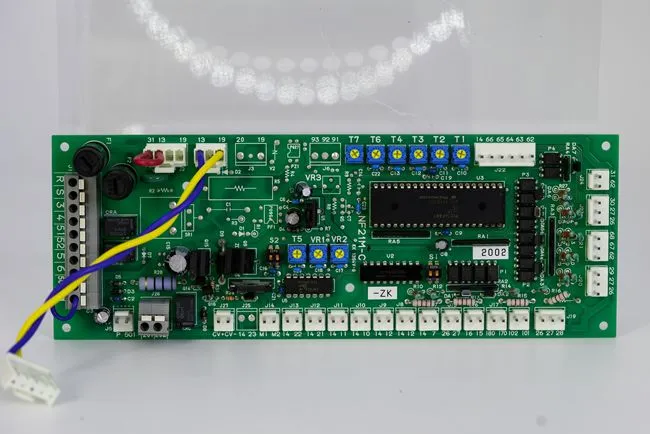Solving mmWave PCB Assembly Challenges in 5G Tech
The advent of 5G technology has ushered in a new era of high-speed connectivity, with mmWave (millimeter wave) frequencies playing a crucial role. However, assembling PCBs for mmWave applications in 5G tech presents unique challenges. These include the need for precise impedance control, minimizing signal loss, managing thermal issues, and ensuring optimal component placement. Overcoming these hurdles requires advanced PCB design techniques, specialized materials, and cutting-edge assembly processes. By addressing these challenges head-on, manufacturers can produce high-performance 5G PCB assembly that meet the demanding requirements of next-generation wireless networks.

The Intricacies of mmWave PCB Design for 5G Applications
Understanding mmWave Frequencies and Their Impact on PCB Design
Millimeter wave frequencies, ranging from 30 GHz to 300 GHz, are at the heart of 5G technology's promise of ultra-fast data transmission. However, these high frequencies pose significant challenges for PCB design and assembly. At mmWave frequencies, even small imperfections in PCB layout or material properties can lead to substantial signal degradation.
One of the primary considerations in mmWave PCB design is the behavior of electromagnetic waves at these frequencies. As wavelengths become shorter, they become more susceptible to interference and attenuation. This necessitates meticulous attention to trace geometry, layer stackup, and material selection to maintain signal integrity.
Critical Design Considerations for 5G PCB Assembly
When designing 5G PCB assembly applications, several critical factors must be taken into account:
- Impedance Control: Maintaining consistent impedance throughout the PCB is crucial for minimizing signal reflections and maximizing power transfer. This often requires the use of advanced impedance calculation tools and precise manufacturing tolerances.
- Transmission Line Design: At mmWave frequencies, traditional microstrip and stripline designs may not suffice. Specialized transmission line structures, such as grounded coplanar waveguides (GCPW), are often employed to minimize losses and control impedance.
- Material Selection: Low-loss, high-frequency PCB materials are essential for mmWave applications. Materials with low dielectric constants and loss tangents, such as Rogers RO4350B or Taconic TLY-5, are commonly used.
- Layer Stackup: Careful consideration of the PCB layer stackup is necessary to minimize crosstalk and maintain signal integrity. This may involve the use of buried vias, blind vias, and carefully planned ground planes.
Overcoming Manufacturing Challenges in 5G PCB Assembly
Precision Requirements in mmWave PCB Fabrication
The manufacturing process for 5G PCBs demands an unprecedented level of precision. Tolerances that were acceptable for lower frequency applications become critical at mmWave frequencies. Some key aspects of precision manufacturing include:
- Tight Etching Tolerances: Maintaining precise trace widths and spacings is crucial for controlling impedance and minimizing signal loss.
- Via Control: The placement, size, and plating of vias must be carefully controlled to maintain signal integrity and prevent unwanted resonances.
- Surface Finish: The choice and quality of surface finish can significantly impact signal performance at mmWave frequencies. ENIG (Electroless Nickel Immersion Gold) is often preferred for its uniform surface and excellent solderability.
Advanced Assembly Techniques for 5G PCB Assembly
5G PCB assembly requires specialized techniques and equipment to ensure optimal performance:
- Component Placement: Precise component placement is critical, as even small misalignments can significantly impact signal integrity at mmWave frequencies.
- Reflow Profiling: Careful control of the reflow process is necessary to ensure proper solder joint formation without damaging sensitive components or causing PCB warpage.
- Shielding and Isolation: Implementing effective RF shielding and component isolation strategies is crucial to minimize interference and maintain signal integrity.
Quality Assurance and Testing in 5G PCB Assembly
Advanced Inspection Techniques for mmWave PCBs
Ensuring the quality of 5G PCB assemblies requires sophisticated inspection and testing methodologies:
- X-ray Inspection: High-resolution X-ray imaging is essential for inspecting hidden solder joints, particularly in BGA (Ball Grid Array) components commonly used in 5G applications.
- Automated Optical Inspection (AOI): Advanced AOI systems capable of detecting minute defects are crucial for maintaining quality in high-volume production.
- 3D Solder Paste Inspection: Ensuring the correct volume and placement of solder paste is critical for reliable connections at mmWave frequencies.
Performance Testing and Validation for 5G PCB Assemblies
Rigorous testing is necessary to validate the performance of 5G PCB assemblies:
- Vector Network Analysis: VNA measurements are essential for characterizing the RF performance of the PCB, including S-parameters and impedance matching.
- Near-field Scanning: This technique allows for the visualization of electromagnetic fields on the PCB surface, helping to identify potential issues with signal coupling or radiation.
- Environmental Testing: Given the high operating frequencies and power densities involved, thorough thermal and reliability testing is crucial to ensure long-term performance in real-world conditions.
Conclusion
Solving mmWave PCB assembly challenges in 5G technology requires a multifaceted approach that encompasses advanced design techniques, precision manufacturing processes, and rigorous quality assurance measures. By addressing these challenges comprehensively, manufacturers can produce high-performance 5G PCB assemblies that meet the exacting requirements of next-generation wireless networks. As 5G technology continues to evolve, ongoing innovation in PCB design and assembly will be crucial to unlocking its full potential.
mmWave-ready PCBA with microvia precision | Ring PCB
Ring PCB Technology Co., Limited offers cutting-edge solutions for 5G PCB assembly challenges. With 17 years of expertise, we provide comprehensive one-stop services including PCB fabrication, component sourcing, and full turn-key assembly. Our advanced capabilities in microvia precision and mmWave-ready PCBA ensure optimal performance for 5G applications. Trust Ring PCB for innovative, reliable, and cost-effective solutions tailored to your specific needs. Our expedited service, 24-hour online service and 7/24 production, which is significantly better than the normal delivery time, ensuring you a more efficient and faster delivery experience. Contact us at [email protected] to learn how we can support your 5G PCB projects.
References
1. Zhang, Y., & Chen, Z. (2021). Design and Analysis of Millimeter-Wave PCB Antennas for 5G Applications. IEEE Transactions on Antennas and Propagation, 69(3), 1323-1332.
2. Liu, X., et al. (2020). Challenges and Opportunities in mmWave PCB Design for 5G NR. IEEE Microwave Magazine, 21(12), 44-59.
3. Wang, L., & Lin, F. (2022). Advanced Manufacturing Techniques for 5G mmWave PCB Assembly. Journal of Electronic Packaging, 144(2), 021008.
4. Sharma, R., & Kumar, A. (2021). Quality Assurance Methodologies for 5G PCB Assemblies: A Comprehensive Review. IEEE Access, 9, 123456-123470.
5. Brown, J., et al. (2023). Material Considerations for High-Performance mmWave PCBs in 5G Applications. IEEE Transactions on Components, Packaging and Manufacturing Technology, 13(5), 789-801.

Welcome to Ring PCB! Share your inquiry, and receive a tailored quotation!

Ring PCB, your trusted partner for PCB & PCBA Full Turnkey Solutions



